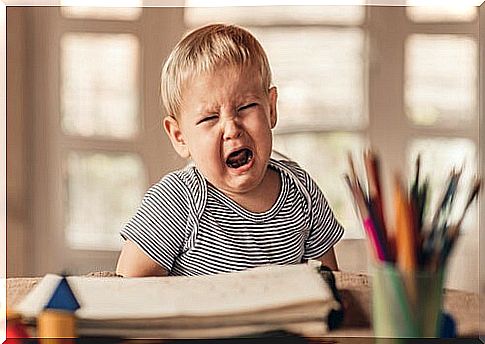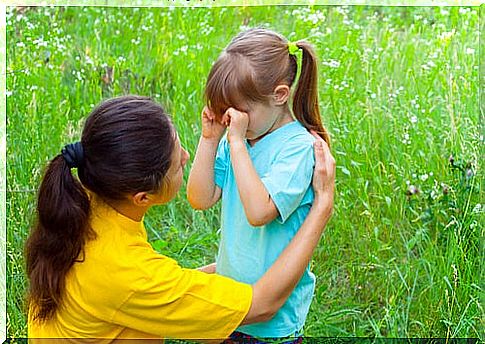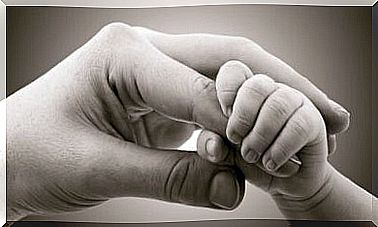How Can We Help Children To Solve Their Own Problems?

Children must learn to solve their own problems. This problem-solving ability is one of the most important skills – and life lessons – that we as a parent can teach them anyway. Above all for the benefit of their own future. The greatest gift we can give them is to help them with and to create the conditions under which they can continue to improve themselves. And don’t wait until they reach adolescence. Even toddlers and preschoolers should already be encouraged to develop their self-reliance and independence.
By always intervening prematurely, and helping our children out of the proverbial fire in advance, we are raising dependent, weak and irresponsible young adults-to-be. This excessive protection is already apparent in everyday matters and tasks, such as when father or mother interferes with the homework of his/her son or daughter at the slightest, or interferes unsolicited in his/her conflicts with peers.
Unfortunately, many parents are neither very aware nor extremely familiar with this learning, growing and maturing process. They themselves simply use the approach or method that – in that specific case – is the most pragmatic, to which they have become accustomed, or what comes to mind spontaneously. It is therefore difficult to teach clearly and step by step their own experience, their own knowledge and skills, or to share them didactically with their children. They know how to do things themselves, but are usually not particularly adept at explaining the how , what and why .
Why children should solve their own problems
Children face all kinds of problems on a daily basis : in the schoolyard or in class, with peers (or brothers and sisters), during sports and games, while performing (household) tasks, or choosing the right clothes for a particular occasion (boy scout trip, wedding, hospital visit, etc.).
By tackling these problems themselves, by solving as many themselves as possible, their self-esteem, their self-confidence and their ingenuity grow. Each and every one of them qualities that they will only benefit from later on. In doing so, they learn to trust in their own independence, and they become their own support and refuge.

On the other hand, if a child does not have sufficient skills to properly solve a problem, and even feels overwhelmed and inadequate by it, he will – almost instinctively – resort to one or more avoidance strategies. Suppose a child is being bullied by classmates, and he does not know how to behave, or do not dare to take action against it, then he will automatically shift the blame or look for the cause elsewhere. For example, saying, “I don’t like school,” “I’m sick today, I’m not going”—anything to avoid the painful situation, rather than confront it or ask for help.
Some children respond to their lack of problem-solving skills through impulsive or aggressive behavior, by doing – without thinking – things that are forbidden to them.
Helping children to look for solutions, and to find the best options, does not mean that you take this decision-making process completely off their hands, but that you guide them through it, then in the back, then in the foreground.
How can we teach children to deal with their own problems?
It starts with recognition and recognition. Children see themselves and understand: this or it , sister and that is a problem. Because sometimes they are barely aware of it, or they don’t have the courage to say it out loud at all. The child must first realize, and then admit, to himself: ‘hey, I have a problem’. As Wittgenstein said, if a problem can arise, then, logically and necessarily, there is also a solution. He probably spoke earlier about seemingly contradictory issues within the so-called transcendental-analytical philosophy, but – in essence – the approach is the same with our everyday concerns.
When children are once able to identify the problem, they can visualize potential solutions in principle itself, and assess their respective merits before coming to A , B or C decisions. A method that is often popular – just as with adults, by the way – is classical brainstorming . In other words: by simply pronouncing and writing down all the solutions – no matter how crazy, improbable or far-fetched – that come to our mind (spontaneously), we give free rein to our imagination and creativity. It is precisely through these wild and non-linear associations, on which we will reflect wisely and deliberately afterwards, that we reach new, or even ingenious and previously completely missed solutions.

Once the child realizes exactly what options they have, and what the associated consequences are, it is time to actually choose. In addition, it is important to communicate – to the child – that if his plan does not work, he can always try something else. In this way we motivate children not to give up, to come up with alternative solutions, until it works.
Actively discussing problems
When problems suddenly present themselves to us, unless there is an acute threat or immediate danger, we do not have to force a solution hastily or too stressed . If you see a child struggling with a particular challenge, let him figure it out, however slowly, for himself – even if you could get it done in no time. Appreciate the fact that, with good spirits and enthusiasm, he is putting his energy into this, for him, great task.
Only when they really get completely lost, keep making the same mistake, or are about to give up (angrily), can you give them a hint, a nudge in the right direction, a helping hand. Not by solving the problem for them, but by showing them where and why they get stuck, and how they could look at the problem differently – from a more promising perspective.
If a child is unable to resolve a conflict on his own, or if he cannot seem to get out of a problematic position on his own, don’t punish or scold him. Suppose he often argues with his siblings, or that he consistently gets bad grades, then be helpful by thinking along with him about the problem, and about possible solutions. Because negative criticism and emotional rejection – ultimately – always backfires.
Let the child suffer the consequences of his decisions himself
If children are allowed and given the freedom to experience the consequences of their actions themselves, then we offer them – as parents and as teachers – the optimal learning climate for promoting their intrinsic problem-solving capacity. Therefore allow children to take action on their own account, and then to bear, explain and account for the implications of this – be it good or bad – from their own, intimate experience.

When a child – or teenager – experiences the repercussions of a choice made on his own initiative, he will also be much more open to a fruitful discussion about: what happened, why and whether there might be other, better options had been, in hindsight, for next time.
If we don’t let our children take risks, and don’t step into the “evil outside” or “adult human world,” they will never learn to make satisfying decisions and will continue to shrink from the slightest doubt or setback because they have repeatedly been made to feel completely incompetent. Please remember that they will only truly develop themselves, and dare to make bold decisions, if we let them go through the whole process: from defining the problem, through proposing possible solutions, to dealing with the practical consequences of their actions. actions.
As parents, we are here to help our children
As parents, we have an important job, the job of helping our children. This is something we don’t think about when we do… Read More









